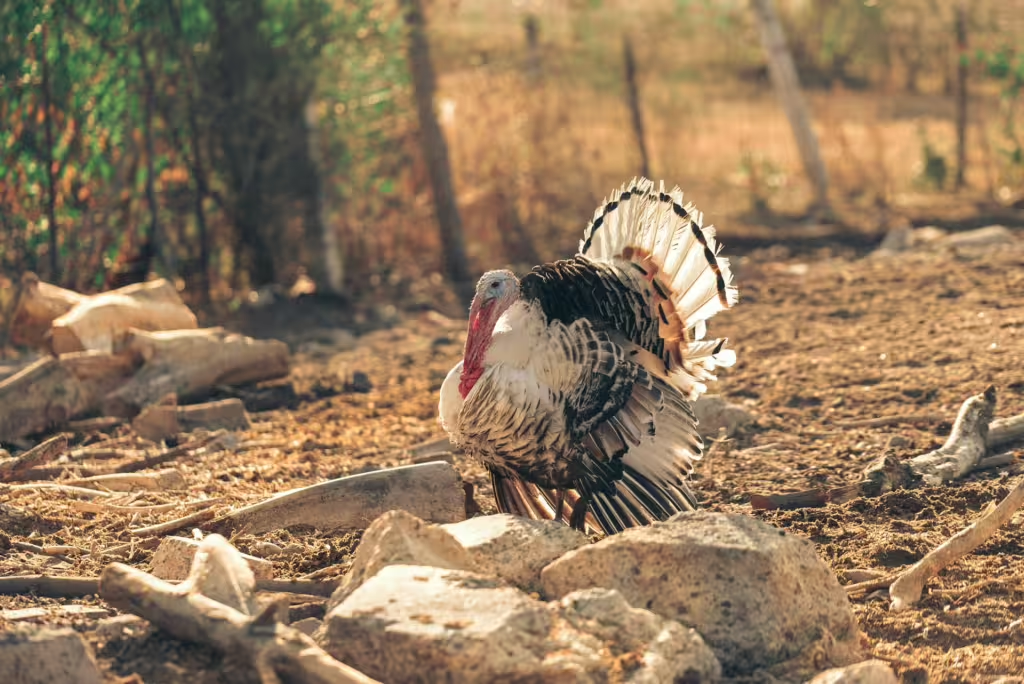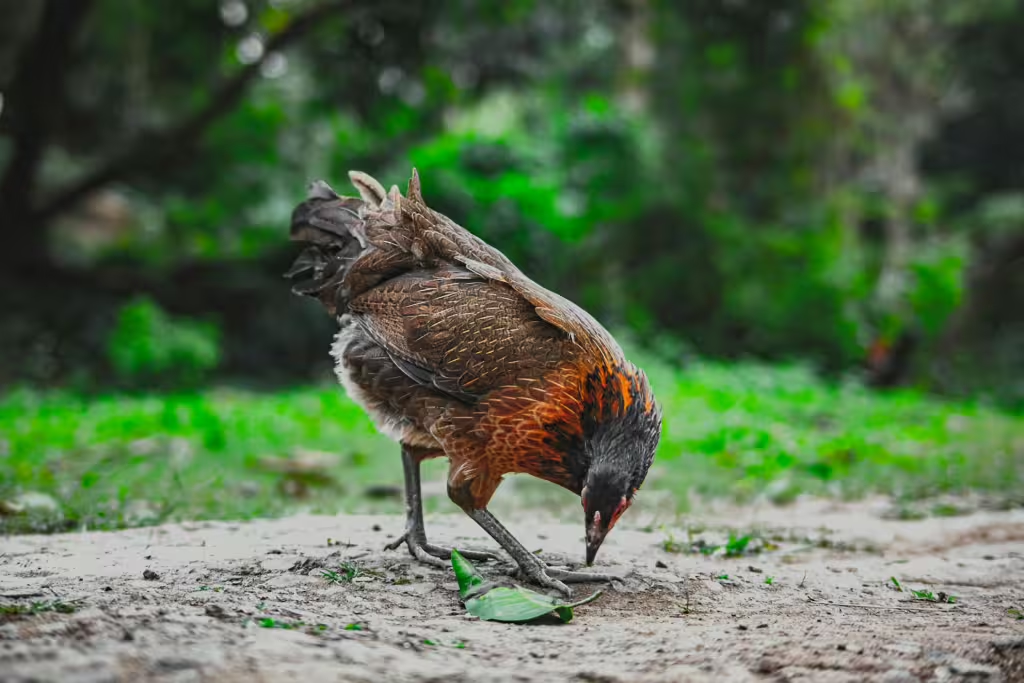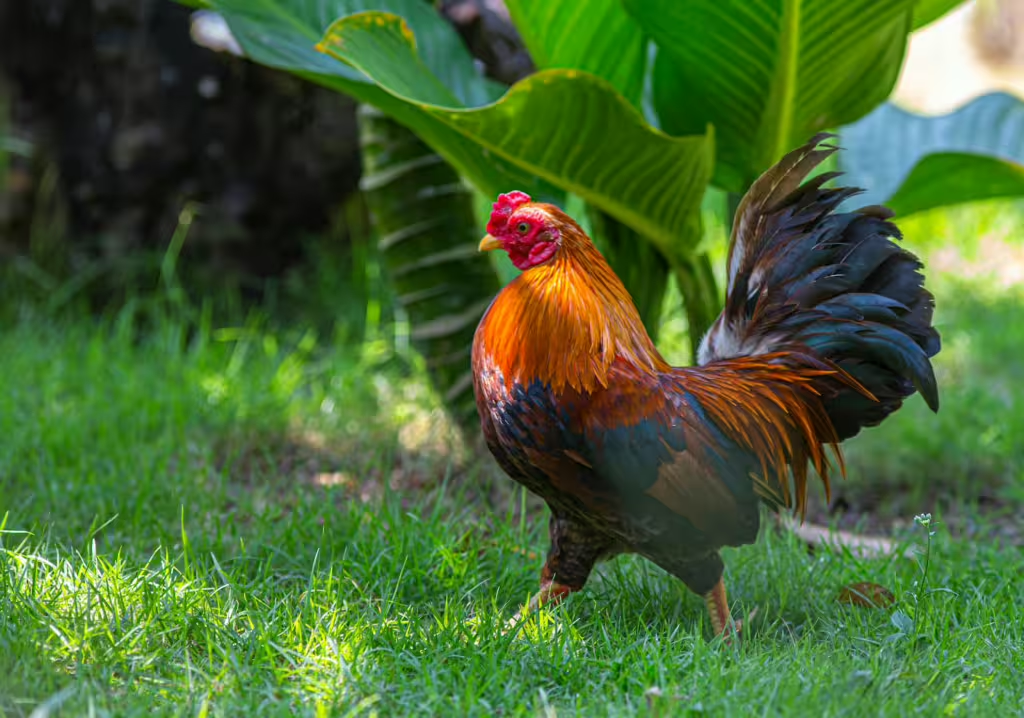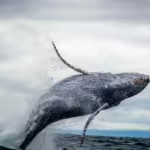When we sit down to a delicious chicken dinner, we rarely take even a moment to consider the bird we’re about to consume. Don’t feel too bad about it, though; the predatory animals out there that routinely dine on wild chickens, ducks, turkeys, and other poultry relatives, don’t really take the time to think about it either. The thing is, there are numerous reasons behind why we domesticated these animals in the first place, just as there are numerous reasons why we spend so much time cooking and eating them.
The birds that belong to the poultry family, which includes the aforementioned fowl and a number of others, plays an important role in both the natural world and human society. Over millions of years, these birds have gone from bone-crushing killing machines to Tuesday’s bucket of takeout, and though they have evolved quite a bit along the way, the end result seems to be that they have become an essential part of how our species survives on this planet.
At the same time, chickens and their relatives have adapted to survive in a wide variety of environments, from dense tropical forests to the open grasslands. Domesticate though many of them are, the wild relatives of these familiar poultry species remain critical components of their home ecosystems and lynchpins of biodiversity. Sadly, like so many animals, even the still wild ones find themselves increasingly at risk due to various human-induced ecological factors.
In this article, we will explores the evolution of these birds, the path that led them from forest, to farm, to table, and their various ecological roles. Finally, we will examine the threats they face due to habitat loss, climate change, and other human activities besides just our ravenous appetite for nuggets.
Guinea Fowls: Distant Cousins of the Chicken
We could and probably should start this show off with a chicken of some variety, though this bird is somewhat unlike any chicken you’ve ever seen. Guinea fowl are silly-looking, yet fascinating birds originally native to sub-Saharan Africa, though they have seen themselves transplanted in other locations thanks to their uncanny ability to keep local insect populations in check. Though there are several species of guinea fowl, the helmeted guinea fowl (Numida meleagris) is the most recognizable and the most common. These birds are medium-sized and possess a rounded body covered in small, speckled feathers that are typically gray or dark in color. Their “helmet” is actually a long with a prominent, fleshy casque which sits atop their tiny heads.
Though they are often used to keep insects in check, guinea fowl are omnivorous and will feed on seeds, insects, or small invertebrates when they are available. As they are highly social birds, they typically forage for these treats in groups but have been known to form rather large flocks as a means of protection against predators. In the wild, they can be found living on savannas, grasslands, and woodlands, as they thrive in environments with plenty of open space and access to food.
Like their domestic chicken cousins, some species of guinea fowl has been domesticated themselves and are raised for their meat, eggs, and feathers. The meat of these birds is considered lean and flavorful, and their eggs are smaller but nutritious. Guinea fowl are also known for their loud, distinctive calls, so they actually make pretty excellent watchdogs on farms. Wild populations of guinea fowl are not considered endangered, though they are threatened by habitat loss and hunting in some areas.

Wild Chickens and Hens: The Ancestors of Domesticated Poultry
The domestic chicken (Gallus gallus domesticus) is the animal that we are perhaps most familiar with in terms of farming and food. Yet though this well-traveled avian has been farmed on nearly every continent, its wild ancestors are still out and about in a few places. The prevailing theory is that we know as the domestic chicken is believed to have descended from the red junglefowl (Gallus gallus), a bird native to Southeast Asia. As a matter of fact, red junglefowl can still found in the wild, particularly in forests and grasslands of India, Thailand, and in many surrounding areas. These wild relatives of modern chickens tend to be smaller and more aggressive than their domesticated cousins. They also exhibit a much more varied diet, feeding on seeds, fruits, insects, and even small animals.
It is believed that the domestication of chickens began between 7,000 and 10,000 years ago. Humans, having discovered how yummy the red junglefowl and their eggs were, began to breed them for specific traits; namely, increased size and egg production. Over time, the domesticated birds got more and more used to being around humans and being handled by them. As a result, they became less aggressive and more suited to living in confined spaces, which is a critical trait for farming, especially when one considers the sheer scope of industrial farming done today.
Unfortunately, red junglefowl are increasingly endangered in their natural habitat. Whether by habitat loss due to deforestation, hunting, or general competition from their domesticated chicken relations, the population has seen some decline in recent years. In some areas, hybridization between domestic chickens and wild red junglefowl has begun to occur, and while this doesn’t seem like a huge problem, it threatens to dilute the genetic purity of these wild populations. Conservation efforts are underway in parts of Asia however, though more steps need to be taken to make such efforts effective in the long run.
The Wild Turkey: A North American Icon

When the United States was just beginning to come into its own, Benjamin Franklin wrote an impassioned plea for the wild turkey (Meleagris gallopavo) to become the national bird over the Bald Eagle….or at least that is the myth. The truth is Franklin did defend the turkey’s honor, though it had no chance of overtaking the incredible raptor. Myth or no, the turkey remains one of North America’s most iconic birds. Native to forests all across North America, wild turkeys are larger and more impressive than their domesticated cousins. Male turkeys, otherwise known as Toms, can weigh upwards of 25 pounds and display striking iridescent plumage.
Like most poultry relations, wild turkeys are omnivores, foraging for a variety of food sources, including seeds, fruits, insects, and small reptiles. Despite their impressive size and cumbersome-looking plumage, these birds are excellent runners and fliers, using their speed and agility to escape predators.
Unlike chickens, turkeys were not domesticated until much later in human history. Current theories place the event around 2,000 years ago, when the indigenous peoples of Mexico decided they wanted to bring the birds home to roast….err roost. As previously stated, the domesticated turkey is much smaller than its wild ancestor and current breeding patterns are focused on producing birds with larger breast meat, which essentially makes them more suitable for human consumption. In the United States, where they were almost king of the birds, the turkey remains a staple of Thanksgiving meals.
Today, the domesticated turkey has become a global agricultural commodity, but wild turkeys face significant ecological threats. In some parts of North America, wild turkey populations are still recovering from near-extinction events in the early 20th century, where they were over hunted and forced out of many of their natural habitats. Yet though conservation efforts have been largely successful in recent decades, wild turkeys continue to face risks from habitat fragmentation, climate change, and hunting pressure.
Ducks: Wild Relatives in Freshwater and Wetland Ecosystems
When it comes to waterfowl that is also considered poultry, the duck is king. These semi-aquatic birds are one of the most versatile groups of waterfowl on the planet, found in a wide range of environments, from freshwater lakes and marshes to coastal wetlands and rivers. The mallard duck (Anas platyrhynchos) is perhaps the most familiar species and may very well be the link between domestic and wild ducks.
There is some evidence that interbreeding between the mallard and the Indian runner duck (Anas platyrhynchos domesticus) is what led to modern domestic ducks more than 2,000 years ago in ancient China. Though they differ in morphology, coloring, and behavior, domestic ducks are still closely related to their wild ancestors. The mallard, as we mentioned earlier, is likely the most common ancestor of all these domesticated breeds. As with chickens, the domestication of ducks involved a selective breeding process that ultimately resulted in birds that were better suited for living in close confinement and producing a steady supply of eggs and meat.
Pekin duck is a prime example of specialized breeding, as they are bred primarily for their meat, while others, like the Khaki Campbell, are more valued for their egg-laying abilities. Like chickens and turkeys, domesticated ducks have become a ubiquitous piece of the modern agricultural puzzle, particularly in countries like China, which is the largest producer of ducks and duck products in the world.
Nevertheless, the remaining wild relatives of domestic ducks are increasingly threatened by habitat destruction, pollution, climate change, and hunting. Wetlands, which are critical habitats for wild ducks, have been drained or degraded due to urban development and agriculture, with the final blow in many cases being delivered by climate change. Pollution is an equally huge issue for wetland species and it is generally derived from agricultural runoff, oil spills, and other contaminants. The result of all this is that more than a few species of wild ducks are now considered threatened or endangered, with some, like the Baikal teal (Anas formosa), are on the very brink of extinction.
Conservation efforts, which include the protecting and preserving wetland ecosystems, has made some strides in rehabilitating these affected ecosystems, but more has to be done. These areas are where ducks breed and feed, and they are crucial for maintaining biodiversity and ensuring the survival of thousands of species, including the humans that live nearby.
Human-Derived Ecological Factors and Threats
As we are the cause of countless poultry deaths each year, it should come as no surprise that other human activities remain the drivers of the threats faced by wild poultry species. Deforestation, urbanization, and agricultural expansion have led to the destruction and fragmentation of a great number of natural habitats, including the wetlands, forests, and grasslands these birds call home.
Climate change, the usual culprit in all these situations, is another significant factor affecting wild poultry species. Shifts in temperature, rainfall patterns, and the availability of food and water have already begun to disrupt the delicate balance of several ecosystems. Species like ducks, which rely on specific wetland habitats, are particularly vulnerable to climate change. Moreover, changes in migration patterns, nesting success, and food availability have all made serious contributions toward the steady decline of many wild bird populations.

The spread of diseases, such as avian influenza, which can be transmitted from domestic poultry to wild birds has become a serious threat to all birds in recent decades. The close proximity of domesticated and wild birds, particularly in agricultural areas, often facilitates the spread of these diseases, which can have devastating effects on wild bird populations of all kinds, not just those that are shaped like farm fowl.
True Investigator Says…
As you can see, wild chickens, turkeys, ducks, and their assorted, presumably delicious relations, are no less fascinating than they are finger-lickin’ good. We joke, of course, as by now you can clearly understand how important these avian appetizers are to the ecological balance of their respective habitats. While it is true that their domestication has had a profound impact on human societies and that they still provided us with essential food sources, economic opportunities, and other resources, their wild cousins are absolutely vital to their local ecosystems.
Although the domesticated poultry birds have long since been relegated to our overzealous consumption, those in the wild still face significant threats from human-derived ecological factors that we didn’t always intend; but that we are no less guilty of. If we don’t do what we can to mitigate the damage to these species done by habitat loss, climate change, and disease, then their problems may eventually make their way into our food supply. That much has already happened, especially in the case of the bird flu and other such maladies. If we aren’t careful, if we don’t up our conservation efforts, begin to take part in sustainable farming practices, or do what we can to prevent the spread of disease, we may eventually find ourselves going hungry.
Discover more from TrueInvestigator
Subscribe to get the latest posts sent to your email.


